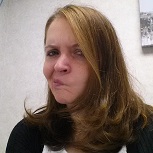A great leader must be able to bring a team together to reach a common goal through the process of applying skills and behaviors to create a solid group relationship for any given situation. It seems to be a universal feeling that when you start a new course and the professor mentions there will be group work, everyone tends to get distressed. Northouse (2016) describes a team as a group of interdependent members working towards a common goal through coordinated activities.
When it comes to team work, establishing a common goal seems to be the easiest part. These are typically assigned by the instructor of the course, or project manager, who divides you into your designated groups or teams. This is also the time for you to discover your team. I have been in a variety of group projects in my schooling and professional careers ranging from committees to essays, and on a variety of different subjects. Every team member has a variety of different ways to contribute to the team, some in more productive ways than others.
Coordinating activities in an academic setting proves to consistently be the difficult part of group work. In an academic setting, such as World Campus, you have to utilize various communication channels while dealing with individuals all over the country to guide the group towards the established goal. My experience has nearly always been negative. Without fail, there is at least one team member who doesn’t communicate or pull their weight, making it difficult for all other members. I found myself always promoting a highly directive, or task, relationship with my team without overstepping the bounds of supporting their insight into the project, which Northouse (2016) classifies as falling in the realm of coaching or directing leadership styles. Being directive, I took the lead in establishing “what is to be done, how it is to be done, and who is responsible for doing it.” (Northouse. 2016. p.94) However, I have always considered myself a good leader in deciding “how much task and how much relationship is required in a given context or situation” (Northouse. 2015. p.109).
Recently, during a group project, I found myself needing to adapt my leadership style. I was fortunate enough to have a team member who also proved to have strong leadership abilities in our situation. This individual contributed a different level of skills than I. Where I tend to excel in human skills, commonly referred to as “people skills” (Northouse, 2016, p.45), this person excelled in the technical skills, which is defined by Northouse (2016) as having “knowledge about and proficiency in a specific type of work or activity” (p. 44). I was able to adjust my typically directive leadership style for group projects, to accommodate this other individual and assist in leading from a more supportive and less directive role, classified as “supporting” in the situational leadership model (Northouse, 2016, p.95).
For group work, it is important to be able to adjust ones leadership style according to those skills displayed by other individuals in your group. A great leader must be able to bring the team together to reach their common goal through a process of applying skills and behaviors to create a solid group relationship for the given situation. Complimenting ones abilities with those of other group members can create and maintain a cohesive and complimentary team environment.
Northouse, P. (2015). Introduction to leadership concepts and practice (3rd ed.). Thousand Oaks, CA. SAGE Publications, Inc.
Northouse, P. (2016). Leadership: Theory and practice (7th ed.). Thousand Oaks, CA. Sage Publications, Inc.








 From the time I was 22 until I was 31, I worked for one company. During my time there, I saw a wide variety of people get put into leadership roles, myself included. The majority of those put into leadership roles exceled in the roles that they were put into a supervisory/leadership role over. Their annual reviews showed shining examples of employees; they were the kind of employees that employers would give their 1st quarter profits in order to employ. All in all, on paper, they all seemed like perfect leadership material.
From the time I was 22 until I was 31, I worked for one company. During my time there, I saw a wide variety of people get put into leadership roles, myself included. The majority of those put into leadership roles exceled in the roles that they were put into a supervisory/leadership role over. Their annual reviews showed shining examples of employees; they were the kind of employees that employers would give their 1st quarter profits in order to employ. All in all, on paper, they all seemed like perfect leadership material. Wait, what? What happened? These employees were shining stars! They were made for greatness! How did they turn out to be such horrible leaders? One possible explanation may tie into Robert Katz’s Three Skills Model which explains the skills approach to leadership.
Wait, what? What happened? These employees were shining stars! They were made for greatness! How did they turn out to be such horrible leaders? One possible explanation may tie into Robert Katz’s Three Skills Model which explains the skills approach to leadership.